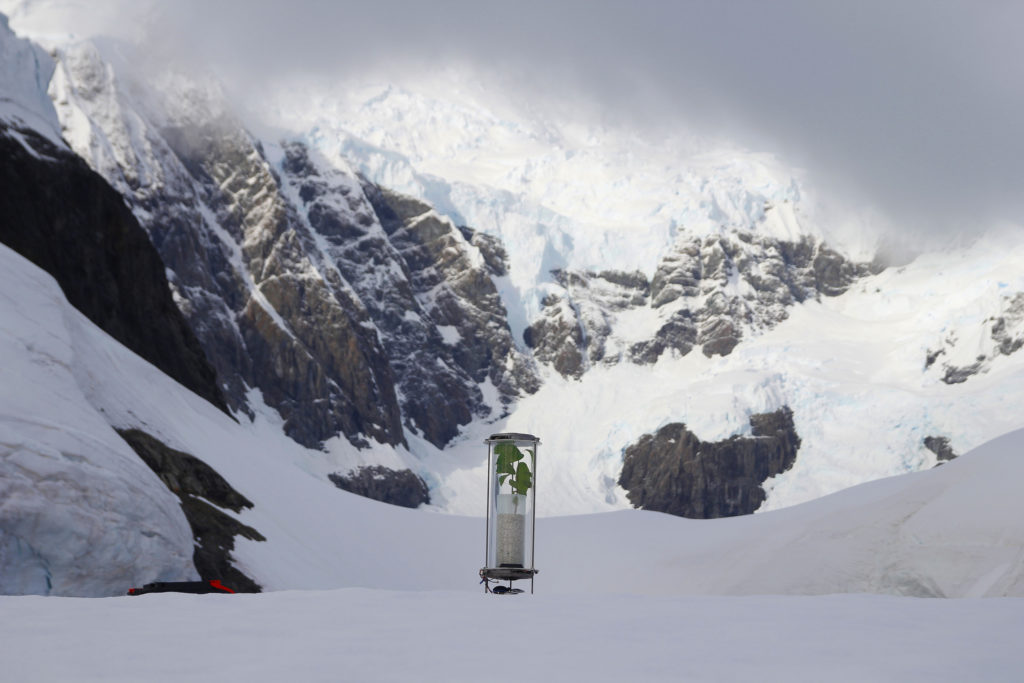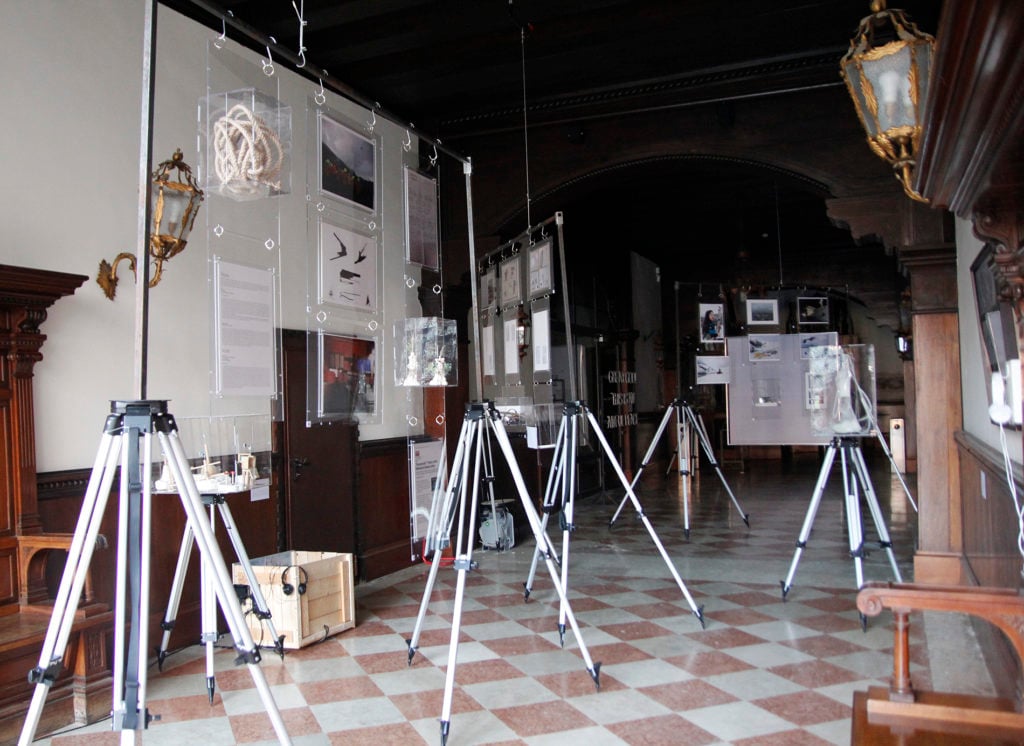Art World
Why Did the Art in Venice’s Antarctic Pavilion Shrink? To Make Room for the Curator’s Own Work
Just weeks before the opening, some artists were asked to show models instead of finished artworks due to 'space limitations.'

Just weeks before the opening, some artists were asked to show models instead of finished artworks due to 'space limitations.'

Emily McDermott

The Antarctic Biennale, a 12-day expedition to Antarctica for a select group of artists, curators, and scientists, already received scrutiny last year when a key curator resigned from her role, citing a lack of communication and an inaccurate representation of the project.
In addition to the journey to Antarctica, the project also involves an exhibition at the Antarctic Pavilion, an unofficial satellite of the the 57th Biennale in Venice. Now this component of the project has generated additional controversy: Less than three months before the opening of the Pavilion, at least four of 15 participating artists were asked to dramatically change their contributions to the show, presenting smaller-scale models of their original artworks; more than half were additionally asked to devise a way to display their work using tripods.
The reason, some participating artists say? To make room for photographs taken by Alexander Ponomarev, the commissioner and co-curator of the Antarctic Biennale and Pavilion.
First, some backstory. Last fall, the participating artists replied to an open call to be part of this year’s Antarctic Biennale; more than 461 artists from 59 countries sent in project proposals and in December, two winners and the 15 finalists were announced.
The winners would have the opportunity to ride along on the 12-day expedition to Antarctica, and the finalists would realize and present their proposed artworks in the Pavilion (although everything from production to shipping costs would be at the artists’ own expense).
It was only in mid-February, after many had already begun working on their projects, that the finalists received a message explaining that the Pavilion would be “very small” and the “projects need to be adapted for the reality of the exhibition space.”
This led to complications.
Winston Chmielinski, an American artist whose practice spans painting, video, performance, and installation, had proposed a tent made from stitching together and overlapping the national flags of the original Antarctic Treaty signatories, suggesting an integrative, denationalized future. After receiving the size constraints, he instead made a quilt from these flags—but then, due to even further limitations, had to remove the body of the quilt, eventually exhibiting only a thin border of fabric.
Andreas Lutz, a German artist who primarily works with audio-visual installations, had been working on his proposed project since he was announced as a finalist but had to abandon it. Instead, he created a smaller version of his previously completed piece Hypergradient.

Artists’ miniature models presented on tripods. Courtesy Antarctic Pavilion
artnet News contacted all 15 finalists and spoke with nine. (Three gave no comment, and three did not respond.) Some said they thoroughly enjoyed the entire experience, from working with the organizers to showing their work in Venice, but others—even those who weren’t asked to decrease the size of their work—faced difficulties, particularly when, on April 12, one month prior to the opening in Venice, the curatorial team revealed two new factors: the venue had changed, and the finalists’ artworks would be presented alongside documentation from the Biennial expedition as well as previous expeditions by Alexander Ponomarev, the co-curator. Until this announcement, many of the finalists believed the Pavilion would feature only their works.
As Jasmin Blasco, a French artist who proposed a daily radio broadcast project, told artnet News over the phone, “The question becomes, ‘Whose show is it?’ Typically when Alexander does a project, it’s his project and his show. I think the extra step of inviting 15 other people into the Antarctic Pavilion is not what happened; it is still his show.”
Valentine Siboni, a French artist working with video, installation, and performance, shared similar feelings: “If you impose materials such as the tripod then it’s not a group show; it’s the project of an artist and we are in that project,” she told artnet News.
Ponomarev is considered a co-curator of the project together with Nadim Samman, yet according to seven of the nine finalists with whom artnet News spoke, neither curator communicated with them prior to meeting in Venice.
“The curatorial team? Who was it? No one took the time to watch my work, a five-minute video,” the Italian multimedia artist Matilde Solbiati said in an email. “There was no interest and respect for the work I’d done. Two days before the show they tried to find some excuse to avoid me bringing my work,” she continued.
Siboni also stated: “I didn’t have any communication with Nadim or Alexander before Venice. Anna [Shvets, the Project Director] was a very sweet bridge, but we had no answers when we would ask questions.”
In response, Anna Shvets told artnet News over the phone, “We were thinking about how to show the works in the best way. The space is not so huge and the quantity of projects on view is quite impressive. With each artist, we were trying to find the best solution.”
“It is not so easy to find a harmonic way every time,” she added, “but I think we finally found it because all of the artists have a space.”
In an emailed statement, co-curator Nadim Samman said: “It is usual for artists to hold clear and uncompromising views on matters of taste such as exhibition design. Sometimes agreement cannot be reached and a collaboration can go no further. We did our best to accommodate all artists and, in this case, none chose to withdraw their work.”
artnet News did not receive comments from Ponomarev by publication time.